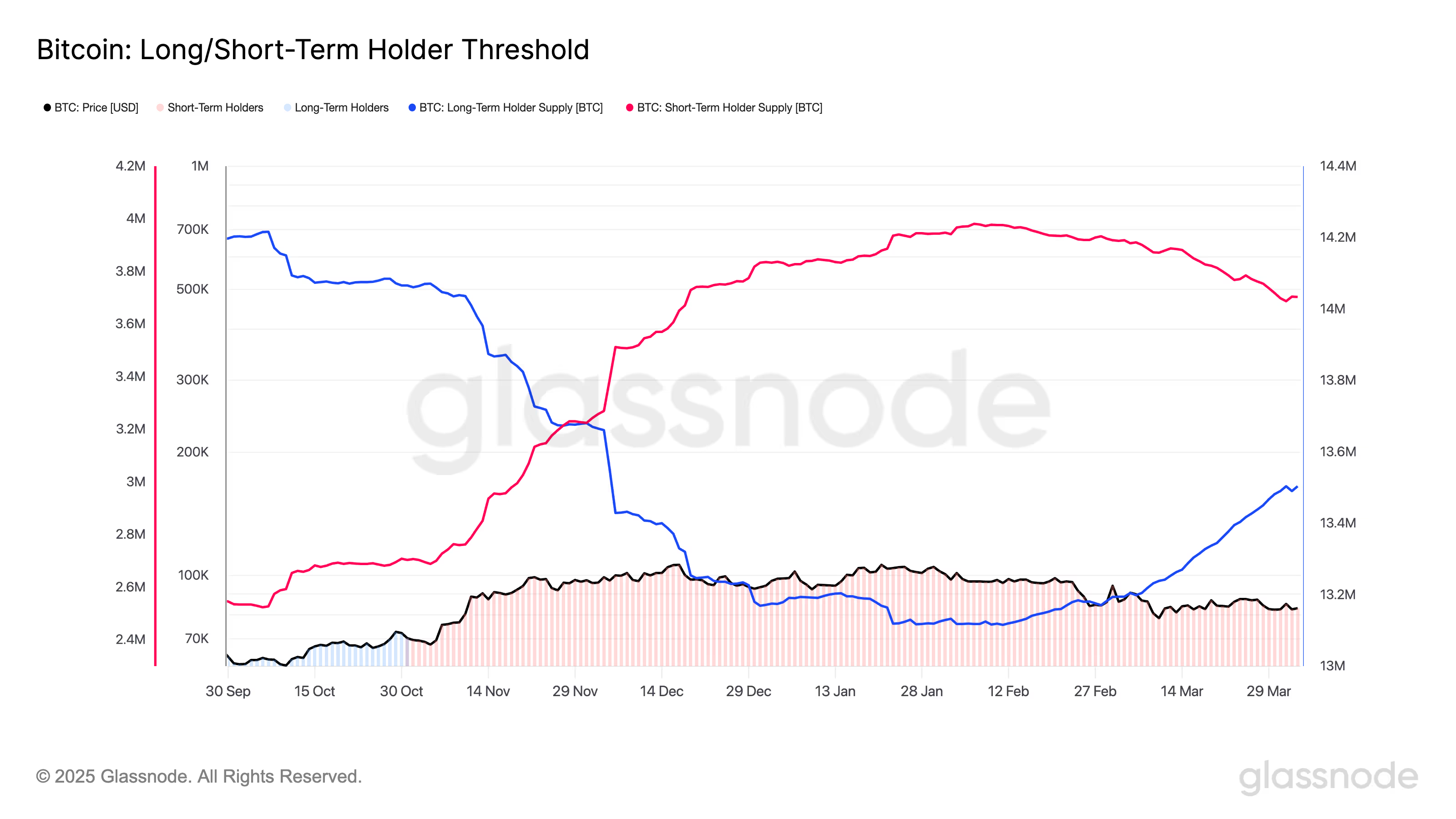BTC Holders Double Down in Early April as Value Buyers Enter the Game, Veterans Remain Steadfast
Bitcoin holders doubled their holdings in early April as high-profile buyers joined the market and seasoned investors showed resilience
Short-term buyers are emerging who appreciate value, while long-term holders are showing increasing confidence despite market fluctuations.
James Van Straten | Edited by Omkar Godbole Updated April 4, 2025, 1:27 pm Published April 4, 2025, 11:54 am

Key points:
- Since the beginning of April, short-term holders have accumulated an additional 15,000 BTC, indicating value buying.
- Long-term investors increased their holdings to more than 13.5 million BTC, reflecting growing confidence despite sluggish Bitcoin trading and a drop in traditional markets in the first week of April.
Since the beginning of April, Bitcoin (BTC) has seen a remarkable increase in confidence from both short-term and long-term holders.
According to Glassnode data, short-term holders (those who have held Bitcoin for less than 155 days) tend to be more sensitive to price changes, often buying during euphoria and selling during dips.
However, short-term holders appear to have become value-oriented buyers of late, despite Bitcoin now being about 25% below its all-time peak.
Since the beginning of April, the group has increased its holdings by about 15,000 BTC, now holding a total of just over 3.7 million BTC. However, since February, they have sold off about 280,000 BTC, likely a result of profit-taking from the November-December rally following President Donald Trump’s election victory. This also includes panic selling during Bitcoin’s 30% drop from its all-time high in January.
Long-term holders — those who have held bitcoin for at least 155 days — have increased their holdings by 400,000 BTC since February, with small purchases this month bringing the total to more than 13.5 million. That suggests growing confidence among long-term investors, even amid recent price stagnation.
While Bitcoin has remained relatively stable since early April, the Nasdaq has fallen 3.5% over the same period, with futures predicting a further 3% decline.



